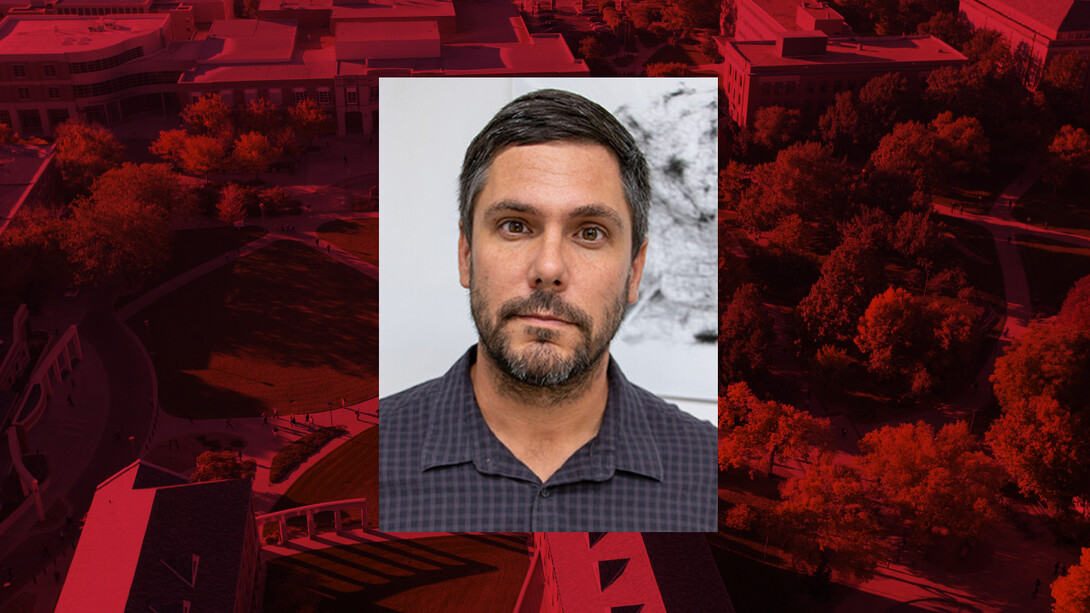
Robert Twomey, assistant professor of emerging media arts, has received a National Science Foundation grant as co-principal investigator on a $750,000 project that aims to create a virtual environment to help high school students learn how to write computer code.
Twomey is co-principal investigator on the “An Embodied, Augmented Reality Coding Platform for Pair Programming” grant with Ying Choon Wu, an associate project scientist at the University of California-San Diego’s Swartz Center for Computational Neuroscience. University of California-San Diego is the lead institution on the grant.
It is Twomey’s first National Science Foundation grant as a principal investigator.
“I was thrilled to learn that the grant would be funded,” Twomey said. “Of all the projects I have worked on recently, this one provides some of the most wide-ranging possibilities, and I have great collaborators to work with. It’s really, really exciting.”
This research builds on previous projects and interests for Twomey that explore possible applications for Augmented Reality technology. This technology allows the real world to be enhanced, or augmented, by computer-generated objects that are “added’ to the real world.
“Over the next three years, we are going to create a virtual environment for writing computer code, create a new programming language for that environment, and then do studies to evaluate how these tools compare to traditional approaches in helping high schoolers learn how to program,” Twomey said. “This research combines my interest in visual programming with new tools for AR. The platforms we will develop dovetail nicely with other Carson Center research exploring Augmented Reality and embodied experience. Also, this focus on learning (the grant is from the NSF Cyberlearning program) really suits our efforts at the Carson Center to teach emerging technology for a wide variety of learners.”
Twomey and Wu also seek to increase participation and interest in groups traditionally underrepresented in the educational and career pathways of computer science, including women, minorities and students from low socioeconomic backgrounds.
“We hypothesize that the highly interactive and engaging nature of our 3-D AR computing experiences will not only increase computer science interest and engagement in these students but will also increase self-efficacy and self-confidence relating to STEM, facilitate computational thinking, and result in high levels of computational concept learning,” they wrote in their grant abstract.
Megan Elliott, founding director of the Johnny Carson Center for Emerging Media Arts, said Twomey’s research is part of why she recruited him this year to join the faculty of the Carson Center.
“Robert’s research on this project is very important as he seeks to explore possible applications for AR technology and think through what programming is and what forms it can take, and how we can introduce a wide range of potential coders to computational thinking,” Elliott said. “I’m so excited about his receiving this grant from the National Science Foundation. It’s a wonderful way to start the academic year for us and his tenure in the Carson Center.”
Twomey said there will be opportunities for Carson Center and University of Nebraska–Lincoln students to be involved in the project.
“Absolutely, I am eager to get Carson Center and UNL students involved,” he said. “There will be great opportunities to work on 3-D modeling, interface design, visual programming and to work with the Hololens 2 and other AR platforms. It should be a lot of fun. In the past, I’ve mentored NSF Research Experience for Undergraduate (REU) students as a part of other NSF grants. That’s something I’d like to set up for this project.”
Twomey is an artist and engineer exploring the poetic intersection of human and machine perception. Prior to joining the Carson Center faculty this fall, he has been an Artist-in-Residence at the Arthur C. Clarke Center for Human Imagination and the STUDIO for Creative Inquiry at Carnegie Mellon University.
Twomey has worked in a variety of research labs throughout his career, notably the Center for the Study of Learning, the Center for Research and Computing and the Arts with Sheldon Brown, the Experimental Design Lab with Natalie Jeremijenko, and the Center for Digital Arts and Experimental Media.
Learn more about Twomey and his work. Additional details about the grant (NSF #2017042) are available here.







